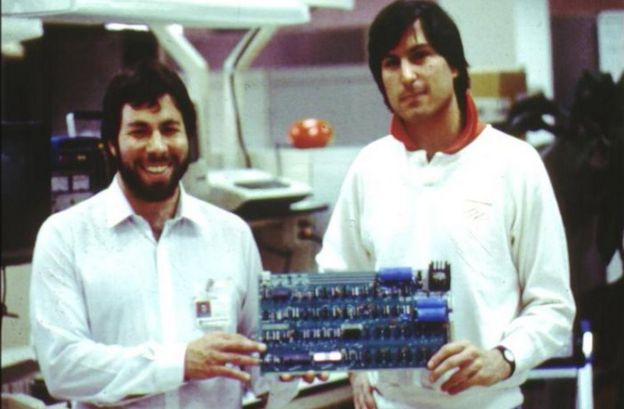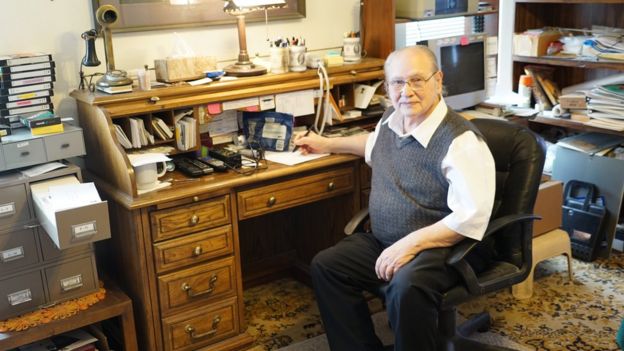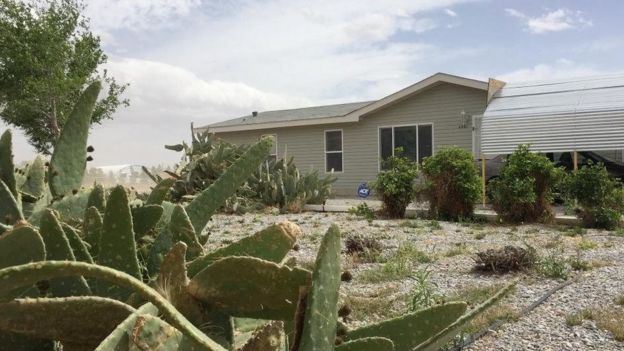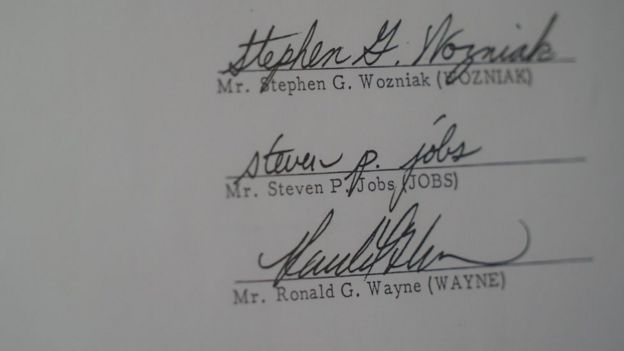Drive out of Las Vegas for an hour into the Nevada desert. When you reach what feels like the end of civilization, carry on. That’s where you’ll find Pahrump.
And it’s in Pahrump where you’ll find the co-founder of the most valuable, perhaps most powerful company, on Earth.
Ronald G Wayne is 81. When he was 41, he worked at Atari. And it was there he met a young, impressionable Steve Jobs who would regularly turn to Wayne for all manner of advice.
Jobs asked if he should start a business making slot machines. Wayne said no.
Jobs asked if he should go to India to find himself. Wayne said, if you must. Just be careful.
One day, Jobs finally asked the question that changed history: “Could you help me talk some sense into Steve Wozniak?”
“Bring him over to the house,” Wayne said. “We’ll sit down, and we’ll chat.”

Parental Woz
The charismatic, lovable Wozniak – you can call him Woz – had been working with Jobs on breaking down business computers and making them into something more personal.
The pair frequented the now infamous Homebrew Computer Club, a gathering of enthusiasts who would pick apart circuitry and build it up again in new ways with the same gusto as an imaginative six-year-old faced with a box of Lego.
Woz was the best. A circuit board he built would form the basis of the Apple 1, the company’s first computer – and one that sold at an auction in 2015 for $365,000 (£254,300).
Jobs wanted Woz’s brain to be an Apple exclusive. Woz was having none of it.
And so it was to Wayne’s flat, in Mountain View, California, to thrash out the details.
“Jobs thought that I was somewhat more diplomatic than he was,” Wayne recalls.
“He very anxious to proceed with Steve Wozniak to get this into production. But Wozniak, being the whimsical character that he was, everything he did was for the pure fun of it. Woz had no concept of business, or the rules of the game.”
Over the course of around 45 minutes, Wayne turned things around.
“He bought into it. He understood,” he says.
“It was at that moment Steve Jobs said: ‘We’re going to start a company. It will be the Apple Computer Company.'”
Wayne typed up the documents there and then, on an IBM typewriter, much to the amusement of Woz, who couldn’t quite believe Wayne’s talent for reeling off four pages of legalese from memory.
Slicing up the Apple pie was straight-forward: Jobs and Wozniak got 45% each, and Wayne had 10%, and a remit to be the voice of reason in any disputes.
Two nickels
Twelve days later Wayne removed himself from the contract.
“For very excellent reasons that are still sound to me today,” he said, 40 years and a market cap of $600bn later.

Jobs, ever the skilful salesman, had just secured Apple’s first big deal. A small computer chain, the Byte Shop, wanted 50 machines. To get the cash, Apple had to borrow $15,000.
But Wayne had heard – from what source he doesn’t remember – that the Byte Shop didn’t have a particularly good reputation for paying its bills.
“If the company goes poof, we are individually liable for the debts,” Wayne explained.
“Jobs and Wozniak didn’t have two nickels to rub together. I had a house, and a bank account, and a car… I was reachable!”
Wayne told the Steves that he wanted to help out where he could, but that he no longer could officially be part of the company.
One lasting contribution was to draw the company’s first logo – an ink-drawing of Newton sitting under a tree, an apple waiting over his head. Wayne signed the image, but Jobs spotted it.
“Take that out!” Wayne recalls him saying. He obliged.
Months after severing formal ties with Apple, Wayne received a letter.
“The letter says all you gotta do is sign away every possible interest you could have in the Apple Computer Company, and the cheque is yours,” he says.
In return he was given $1,500.
“As far as I was concerned, it was ‘found money’. So I went ahead and I signed.”
Modest
Pahrump is 500 miles (800km) and one whole universe away from Cupertino, where Apple is headquartered today.
Wayne’s home is as modest as it is loved. Ornaments from the life of a curious engineer and collector are dotted throughout.
By the door, an old silver slot machine. Against one wall, a still-functioning radio from the thirties, housed in beautiful mahogany.

He told me about the time he made a scale replica, both interior and exterior, of the Nautilus – the colossal submarine featured in the film 20,000 Leagues Under the Sea. He didn’t have any blueprint to work with, instead studying freeze-frames from the film.
When he was finished, he gave it away to a museum.
Today, a 10% share of Apple would be worth almost $60bn. If Wayne regrets his decision, he’s extremely good at covering it up.
“I would’ve wound up heading a very large documentation department at the back of the building, shuffling papers for the next 20 years of my life. That was not the future that I saw for myself.
“If money was the only thing that I wanted, there are many ways I could’ve done that. But it was much more important to do what appealed to me.
“My advice to young people is always this – find something you enjoy doing so much that you’d be willing to do it for nothing… and you’ll never work a day in your life.”
Long-lost brother
Wayne keeps all his fan mail in a small box in the corner of his study. It’s full of autograph requests, calls for advice and general messages of admiration.
One letter, from a fan called Jason, jokes about the notion of the infamously self-assured and combative Steve Jobs ever being able to take the constructive criticism Wayne was able to dish out.
“He was a fascinating man,” Wayne reflects.
“Who made Apple what it is? Obviously, Jobs.
“Was Jobs a nice guy? In many ways, no. But that doesn’t matter.”
Wayne considered himself the “adult supervision” to the Jobs dream, even offering a supportive boost early on.
“Jobs says: ‘You know, I’m having second thoughts about this. There are other things I want to do’.

“I said: ‘Steve, whatever it is that you want to do, you can do it a lot more easily with money in your pocket. Go ahead and make the money, and do whatever you want to do. Just don’t forget what you wanted the money for’.
“He forgot. I think he became so involved in the mechanics of running Apple that it was more like he was caught up to such an extent that nothing else mattered.”
Apple-free life
While having no remorse about giving up his role in Apple, Wayne does have at least one regret: selling his copy of the original signed contract, for $500.
In 2011, that same document fetched $1.6m at auction. Just one more “what if” to add to the list.
Looking around Wayne’s home, there’s no Apple products to be seen. He prefers to build and customise his own technology – it’s more fun that way, he said.
In 2011, someone gave him an iPad 2 as a gift. Like so much else in his life, Wayne gave it away.
[Source:- BBC news]




